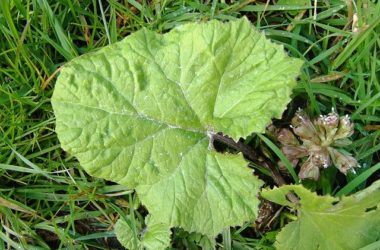
1.) Soak your foot in a mixture of hot (or as hot as you can stand it) water and Epsom salt. Do this for 15-30 minutes at least twice daily. The goal here is twofold: to soften the toenail and prevent the ingrown nail from becoming infected.
2.) Gather your tools and get ready. Get a cotton round or a cotton ball ready, a pair of tweezers along with something pointy (like a tool that helps you remove cuticles, for example).
3.) Trim your toenail, taking extra care around the ingrown section. Make sure your toenail is cut perfectly straight without any pointed parts near the edges. Toenails that are rounded off have an increased likelihood of growing into the skin, causing ingrown nails.
4.) Use something pointy to push the cotton under your toenail into the corner. Don’t push too hard or you will hurt yourself! The piece of cotton should form a little ball under your toenail in the corner. It doesn’t have to be so big that it sticks out from the top of your toenail, but make sure it is not too small either. If you firmly but gently pack as much cotton as is comfortable, you will have the right amount of cotton to do the job..[2] Remove cotton daily to cleanse area and replace with new cotton to reduce risk of infection.
5.) Stop infection. Apply infection-preventing ointment to the site and keep it bandaged. Neosporin works fine for these purposes.
6.) Give your toe some air! Don’t wear socks or shoes when you’re at home.
7.) Check back. If you keep the cotton in place and treat your feet well, your ingrown toenail should grow back out within a few weeks.
Replace the cotton every day to keep the toe from becoming infected. If the toenail is painful, replace the cotton every other day, checking daily for infection.
Home Remedies:
1.) Soak your foot in a warm water that’s been treated with a povidone-iodine solution. Put one or two capfuls of povidone-iodine into warm soaking water instead of Epsom salts. Povidone-iodine is an antimicrobial that fights infection and fungus, forming a layer of protection until the solution is washed away.
2.) Wrap the toe with a slice of lemon and bandage the toe overnight. Tie a thin slice of lemon on the toe with gauze and leave overnight. The acidity of the lemon helps fight infection overnight.
3.) Use oils to soften the skin around the toenail. Oils applied to the toenails can help moisturize and soften the skin, reducing the pressure put on the toenail when you have to wear shoes. Try the following oils for fast relief:
Tea tree oil: this essential oil is both an antibacterial and an anti-fungal agent that smells great.
Baby oil: another great-smelling mineral oil, this doesn’t have the antimicrobial properties of tea tree oil, but works great for softening the skin.
4.) Try a soak of potassium permanganate. Potassium permanganate soaks are common home treatments for athlete’s foot. For 2 to 3 weeks, place 0.04% potassium permanganate in water and let your feet soak for 15 to 20 minutes, once a day. Your feet will turn slightly brown, but the permanganate is a natural disinfectant and will help keep your toes and nails exceptionally clean.
5.) Decrease pressure and increase drainage with a band-aid. Secure a band-aid to the bottom of your toe and pull the skin away from the location where the nail is cutting into the nailbed. The trick is to move the skin away from the offending nail with the help of a band-aid. This can decrease pressure in the area, and if done properly, promote drainage and drying.
Keep toenails at a moderate length and trim them straight across. Nails that are rounded have a higher chance of growing into the skin around the toes, creating problems.
Use toenail clippers or nail scissors to trim toes. Ordinary nail clippers are small enough that they tend to leave sharp edges near the corner of the toenail.
Optimally, try to cut your toenails once every 2-3 weeks. Unless your toenails grow extremely fast, cutting your toenails often won’t give them a good chance to become ingrown.












